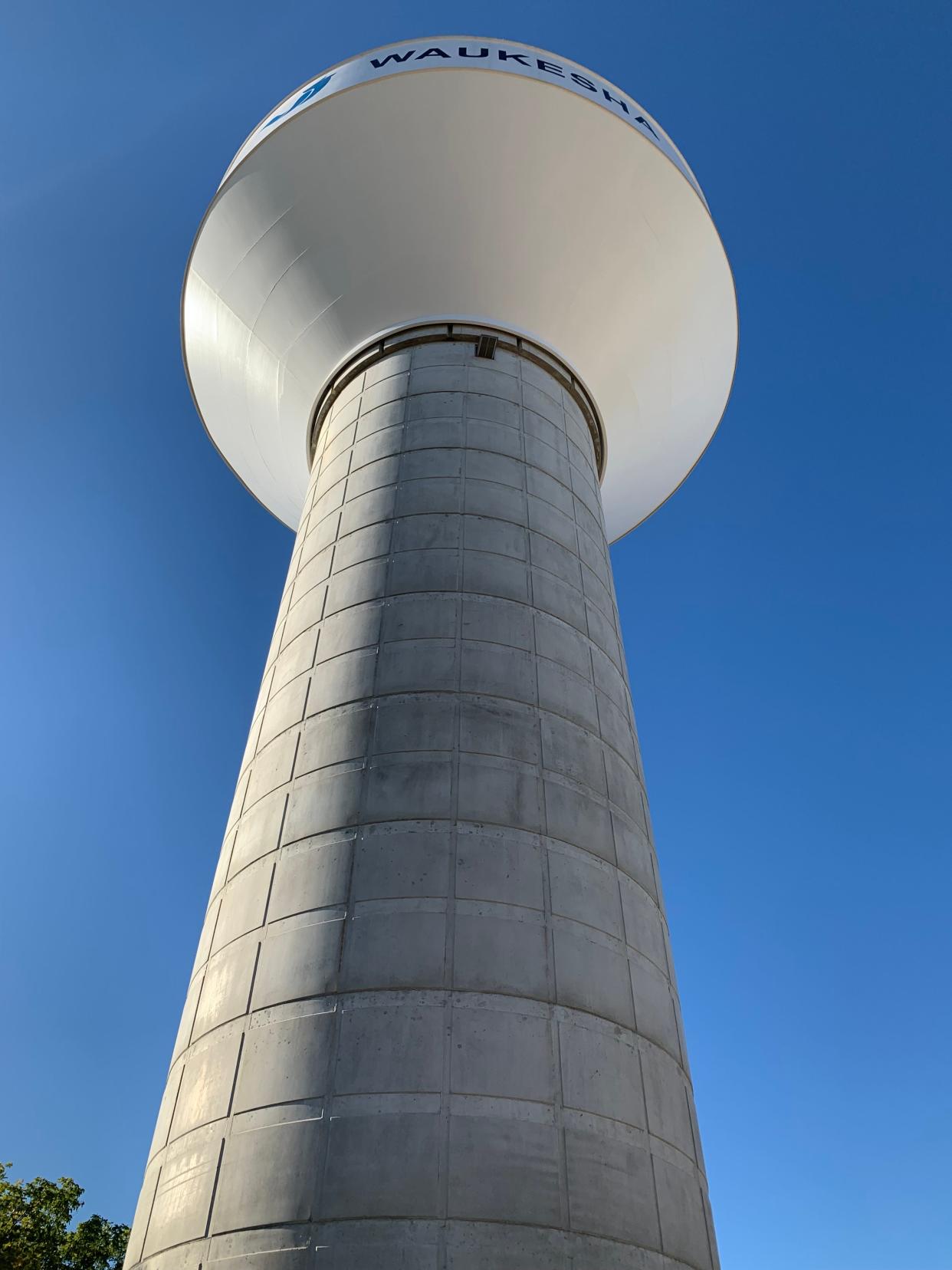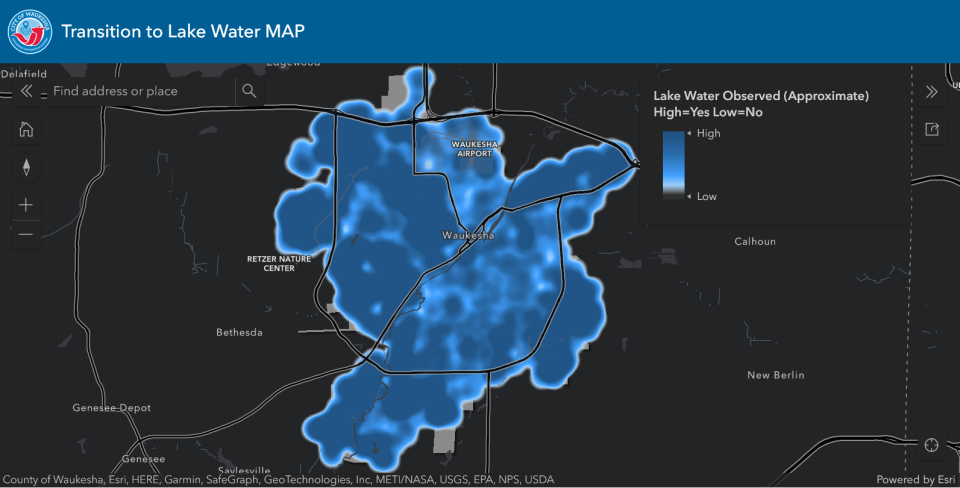Waukesha's water transition reaches 90% goal as residents get first taste of Lake Michigan

WAUKESHA - Almost of all the city is now in "lake" country, at least as measured by its new water supply through its new $286 million pipeline system.
All that remained in Waukesha's historic transition from groundwater to Lake Michigan water as of Friday were the western edges of the service area, one area to the north and a small section to the south, according to the transition map posted on the Waukesha Water Utility website, plus cul-de-sacs and dead-end water mains throughout the city.
By mid-afternoon Friday, the fifth day since the transition began Oct. 9, the flow had reached across Waukesha, meeting the city's five-day benchmark for the presence of lake water within the service area as previously announced.
"We'll be at 90 percent this afternoon, right on schedule," Dan Duchniak, Waukesha Water Utility's general manager said Friday afternoon.
Crews work to transition dead-end lines to complete effort
While the city has met its initial goal, the work isn't done yet. Utility officials have estimated the work to completely transition all water service area customers to lake water could run through October or beyond.
That's because certain areas, notably cul-de-sacs and any place the water mains are capped along dead-end right of ways, get very little water flow from normal usage. The solution is for crews to flush the mains using hydrants closest to those spots.
The public transition map, intended for broad public use, isn't as precise as the "behind-the-scenes" map utility officials have been using to measure the transition, Duchniak said. Workers will focus on the areas where the water sources remain mixed.
"We know exactly where we're at behind the scenes," he said. "Our guys are going to be switching over and working over the weekend and all next week on dead-end mains and cul-de-sacs. We're hoping we are done with those in two to three weeks, instead of three to four weeks, but no promises there. It depends on how things go."

Residents react to the change with 'few complaints'
For the most part, residents' reactions have been positive, though some were put off by odor problems at first and others just weren't sure of what to make of the new water until the transition is done.
"We've had very few complaints," Duchniak said. "We have had one formal complaint, and that was on smell — the chlorine smell. And what people are seeing mostly, from the phone calls that we have been getting, is a red tint to the water."
The smell will diminish as the chloramine disinfectant concentration is reduced after the transition phase, possibly as early as next week, for most residents, Duchniak said. The rust tint of water cleared up for residents once they flushed their pipes at home, he added.
In a Facebook post Thursday, city officials amended earlier warnings about the potential need for residents to flush their home pipes as the lake water rushed through the system. (The city had posted instructions in news releases, on the Waukesha Water Utility website and on Facebook advising residents to run cold water for five minutes to clear discolored water.)
"It's important to note that not everyone will see discoloration or experience an odor during the transition," the city said in the post. "You could be on Lake Michigan water and not have noticed any significant change. It is only necessary to flush your system if you notice discoloration. If you do not live on a dead end or cul-de-sac and are fully in the blue on the map, it is okay to reconnect water filtration systems, do laundry, etc. if you are not experiencing any discolored water."
On NextDoor, a social media platform that focuses on neighborhoods, residents replying to a post about the taste of the water called it "great." However, some did note they could taste the boosted chloramine, the chlorine-and-ammonia disinfectant used by Milwaukee Water Works. (The concentration is a bit heavier during rollout, Waukesha Water Utility officials acknowledged, as a safety measure.)
Several were dismayed by the odor, though that was early in the transition.
The city has advised residents to continue to bypass their water softeners for several weeks after the transition to determine if they are satisfied with the "softness" of the water supply, with has a calcium and magnesium mineral content of about 8 grains per gallon compared to the groundwater content of 23 to 26 grains per gallon.
Contact Jim Riccioli at (262) 446-6635 or james.riccioli@jrn.com. Follow him on Twitter at @jariccioli.
Our subscribers make this reporting possible. Please consider supporting local journalism by subscribing to the Journal Sentinel at jsonline.com/deal.
DOWNLOAD THE APP: Get the latest news, sports and more
This article originally appeared on Milwaukee Journal Sentinel: Waukesha water switchover continues, now at 90% Lake Michigan water

